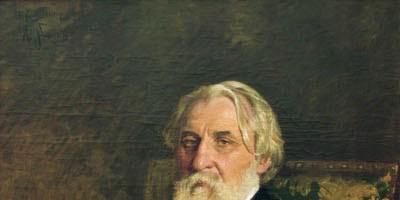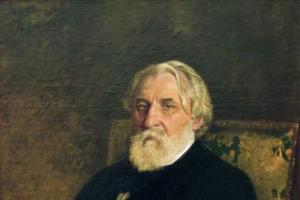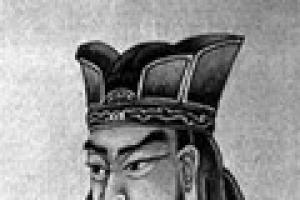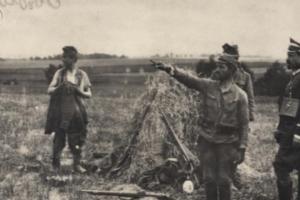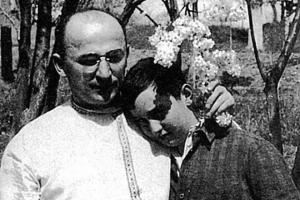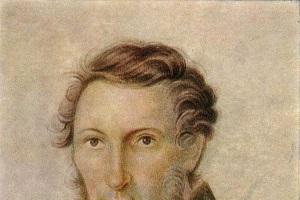Sections: Literature
Lesson objectives: deepening students' knowledge about the image of the main character of the story; introduce the concepts of psychological portrait, literary type of a “Turgenev” girl.
Equipment: the topic of the lesson is written on the board; cards for individual work on issues; each student has a table “Characteristics of Asya”; cards with theses “The main moral traits of Asya”, which are posted on the board during the conversation; for homework - illustrations of girls
During the classes.
I. Teacher's opening speech.
Today in class we will continue the conversation about the story by I.S. Turgenev "Asya". We have to find out the secret of Asya and her brother, which will help us understand the “strange” behavior of the girl. We will get acquainted with the concepts of “Turgenev girl” and determine what is typical for this literary type. Let's find out what a psychological portrait is. Let’s complete filling out the table “Characteristics of Asya”. Now let's turn to homework.
II. Accounting for knowledge.
1. Read the characteristics of Asya given by Gagin.
(“Such a crazy woman... Don’t tease her, you don’t know her: she’ll probably climb the tower.”; “She has a very kind heart, but a bad head”; “She never has half a feeling”; “Gunpowder.” she is real... trouble if she loves anyone."; "Asa needs a hero, an extraordinary person - or an animal shepherd in a mountain gorge.")
2. Conversation on issues:
- what appearance is made up of these characteristics?
(impulsive, kind, capable of surrendering to a strong feeling without reserve, able to feel acutely, worry, worthy of an extraordinary person);
- Why do you think N.N., looking at Asya, involuntarily exclaims: “What kind of chameleon is this girl?”
III. Work on the topic of the lesson.
1. Write the topic in a notebook.
2. Work using individual cards.
Card 1.
Asya and Gagin. Why do they hide their relationship?
N.N. asks himself this question: “However,” I thought, “they know how to pretend! But why? Why do you want to fool me? I didn’t expect this from him... And what kind of sensitive explanation is that?”
Give answers to these questions, but not on behalf of the narrator, but on behalf of the reader.
Card 2.
Among the means of artistic representation used by I.S. Turgenev, you can note the landscape, portrait, detail, story of one of the heroes (Mr. N.N., Gagin), etc. Re-read the description of the portrait of the heroine from chapter 2 of the story. What makes it unique?
The girl whom he called his sister seemed very pretty to me at first glance. There was something special about her dark, round face, with a small thin nose, almost childish cheeks and bright eyes. She was gracefully built, but as if not yet fully developed (...) her black hair, cut and combed like a boy’s, fell in large curls on her neck and ears (...) I have not seen a more mobile creature. Not a single moment did she sit still; she got up, ran into the house and came running again, hummed in a low voice, often laughed, and in a strange way: it seemed that she was laughing not at what she heard, but at various thoughts that came into her head. Her large eyes looked straight, bright, bold, but sometimes her eyelids squinted slightly, and then her gaze suddenly became deep and tender.
What secret does N.N. learn about Asya and her brother?
3. Monologue on the topic: “What in Asya’s behavior explains her background?
4. Reading by role of the episode “Dialogue between Asya and N.N.”
(Chapter IX. From the words: “Go somewhere far away to pray...” to the words: “It seems that I haven’t flown yet.”
5. Analysis of the episode read.
- What does Asya dream about?
(go somewhere to pray, be like Tatyana Larina, about wings)
- What kind of wings are we talking about?
(the characters talk about love, about how this feeling elevates a person, “lifts him above the ground.” But we are talking not only about love, but also about “the wingedness of a person, i.e. the ability to selflessly love, strive for something big, the present, to which you can devote all your strength.
- How do Asya’s dreams characterize her?
(Asya strives for the unknown - for the future; she is ready for self-sacrifice, the girl has a rich spiritual world.
She has in common with Tatyana Larina sincerity and artlessness of feelings)
- Why does the girl’s strangeness, her aspiration for the future cause hesitation in N.N.’s soul?
(He is afraid to go forward, afraid to break away from earthly habits and prejudices. In the world of artificial feelings and passions, he met something real for the first time. N.N. gives in to the necessity of action. He cannot meet the high demands that Asya places on herself and to people).
6. Answer on card No. 2.
(Work on card No. 1 is handed over to the teacher)
7. Summary of the answer
Literary theory
This portrait is called psychological, i.e., revealing the characteristics of the hero’s personality.
- What is the psychologism of Asya’s portrait?
(In changes, in movements, the reader understands what is happening in the heroine’s soul)
- What happens in the girl’s soul?
(Love is born, new feelings have overwhelmed Asya. Love is manifested through impetuous movements, through the changing expression of the eyes...)
Teacher:
The main idea about the heroine is created by her actions and behavior in various situations. What words could you use to describe Asya's behavior?
Working with the word EXTRAVAGANT
- Acquaintance with the meaning of this word in the Explanatory Dictionary.
- Give examples from the text that prove the extravagance of the heroine’s behavior.
- What explains this behavior?
(Asya explains it herself. Her extravagant actions reveal her nature. The girl herself constantly reflects on herself, revealing her soul in randomly thrown words)
8. Teacher's word
In the 50-70s, Turgenev turned to new genres touching on themes of a psychological nature. These are the stories “Calm”, “Spring Waters”.
The images of Turgenev’s heroines, with all the unique originality of each of them, formed into a single image of the “Turgenev girl” characteristic of Russia. For the first time, the main features of this image appeared in the heroine of the novel by I.S. Turgenev "Rudin" - Natalya.
The writer's contemporaries were surprised and attracted by her desire for a different life and the expectation of a figure who would be able to show the path to it.
Observations and conclusions about Asya’s character and actions allow us to approach the concept of the literary type of “Turgenev’s girl”
T.L. Literary type is a generalized image.
-What do you think is characteristic of the literary type of “Turgenev girl”?
(as the students answer, the teacher makes small generalizations and posts the theses “Asya’s main moral traits” on the board (Appendix No. 1):
- A soul that is impossible not to love;
- The ability to have sincere strong feelings, the absence of falsehood and coquetry;
- focus on the future;
- strong character, readiness for self-sacrifice;
- activity and independence in deciding one’s destiny.
These are the most striking moral traits of the heroine of the story “Asya”
9. Completion of filling out the table “Characteristics of Asya”(students began filling out this table in the previous lesson).
Make notes in the table yourself (music plays while you work)
CHARACTERISTICS OF ASI.
| Portrait of a heroine | Moral qualities | What does he dream about? | Generalization, conclusions |
IV. Lesson summary.
- What thoughts and feelings does the image of Asya evoke in you?
Summing up the lesson, grading.
V. Homework.
Select and complete a task from the following:
1. Write a film script for your favorite episode;
2. Write a letter to Asya;
3. From these portraits, choose the one that matches your idea of Asa. Explain your choice (
It was based on the features inherent in the writer’s biography. The characterization of Asya in the story “Asya” is impossible without a brief excursion into the life, or rather the love of Ivan Sergeevich.
Eternal friend of Pauline Viardot
The relationship between Polina Viardot and Ivan Sergeevich lasted 40 long years. It was a love story that settled in the heart of only one person, Turgenev, and the woman he passionately revered did not reciprocate his feelings. She was married. And for all four decades, Ivan Sergeevich came to their house as an eternal and forever faithful friend of the family. Having settled “on the edge of someone else’s nest,” the writer tried to build his own, but until the end of his life he loved Pauline Viardot. Viardot became a homewrecker, a killer of the happiness of girls who recklessly fell in love with Ivan Sergeevich.

It is worth saying that the tragic relationship with Viardot was not new to him. The very young Ivan, at the age of eighteen, fell in love with his daughter Katenka. The sweet angelic creature that the girl seemed to be at first glance, in fact, did not turn out to be such. She had a long relationship with the main village ladies' man. By evil irony, the girl’s heart was conquered by Sergei Nikolaevich Turgenev, the writer’s father.
However, not only did the writer have his heart broken, he himself more than once rejected the women who loved him. After all, until the end of his days he adored Pauline Viardot.
Characteristics of Asya in the story “Asya”. Type of Turgenev girl
Many people know that Turgenev’s girls exist, but few remember what she is like, the heroine from the writer’s stories.

The portrait characteristics of Asya found on the pages of the story are as follows.

As can be seen from the above lines, Asya had atypical beauty: her boyish appearance combined short large eyes fringed with long eyelashes and an unusually slender figure.
A brief description of Asya and her external image will be incomplete without mentioning that, most likely, it reflected Turgenev’s disappointment in the circle (consequences towards Ekaterina Shakhovskaya).
It is here, on the pages of the story “Asya”, that not only Turgenev’s girl, but Turgenev’s feeling of love is born. Love is compared to revolution.

Love, like revolution, tests heroes and their feelings for perseverance and vitality.
Asya's origin and character
The backstory of the heroine's life made a significant contribution to the girl's character. She is the illegitimate daughter of a landowner and a maid. Her mother tried to raise her strictly. However, after Tatyana’s death, Asya was taken in by her father. Because of him, feelings such as pride and distrust arose in the girl’s soul.
The characterization of Asya from Turgenev's story introduces initial inconsistencies into her image. She is contradictory and playful in her relationships with all people. If you take her interest in everything around her, you can understand that the girl shows this a little unnaturally. Since she looks at everything with curiosity, but in fact does not delve into anything carefully or peer into it.
Despite her inherent pride, she has a strange predilection: making acquaintances with people who are lower in class than her.
Moment of Spiritual Awakening
The characterization of Asya from Turgenev’s story will be incomplete if we do not think about the issue of the spiritual awakening of the main characters: Asya and Mr. N.N.

The hero and author of the story, having met Asya in a small German town, feels that his soul trembled. We can say that he came to life spiritually and opened up to his feelings. Asya removes the pink veil through which he looked at himself and his life. N.N. understands how false his existence was until the moment he met Asya: time wasted on travel now seems to him an unaffordable luxury.

The reborn worldview of Mr. N.N. looks forward to every meeting with trepidation. However, faced with a choice: love and responsibility or loneliness, he comes to the conclusion that it is absurd to marry someone whose temper he can never conquer.

Love also helps Asya’s character reveal itself. She begins to realize herself as an individual. Now she cannot get by with the usual reading of books from which she gained knowledge about “true” love. Asya opens up to feelings and hopes. For the first time in her life, she stopped doubting and opened herself up to vivid feelings.
What is she like, Asya, in the eyes of Mr. N.N.?
The characterization of Asya in the story “Asya” is not carried out by Ivan Sergeevich himself; he assigns this task to his hero, Mr. N.N.
Thanks to this, we can notice the transformation of the hero’s attitude towards his beloved: from hostility to love and misunderstanding.
Mr. N.N. noted Asya’s spiritual impulse, wanting to show her “high” origin:

At first, all her actions seem like “childish antics” to him. But soon he saw her in the guise of a frightened but beautiful bird:

The relationship between Asya and Mr. N.N.
The verbal characterization of Asya in the story “Asya” predicts the tragic outcome of the emerging relationship between the heroine and Mr. N.N.
By nature, Asya is a contradictory person from her very roots. One has only to remember the girl’s attitude towards her mother and her origins:

The girl loved to be paid attention to, and at the same time was afraid of it, since she was quite timid and bashful.
Asya dreams of a hero who will become for her the embodiment of happiness, love and thought. A hero who can meekly oppose himself to “human vulgarity” in order to save love.
Asya saw her hero in Mr. N.N.
The girl fell in love with the narrator from the first moment they met. She wanted to intrigue him and at the same time show that she was a well-born young lady, and not some kind of daughter of Tatyana’s maid. This behavior, unusual for her, influenced the first impression formed by Mr. N.N.
Then she falls in love with N.N. and begins to expect from him not just actions, but an answer. The answer to the question that worries her: “What to do?” The heroine dreams of a heroic deed, but never receives it from her lover.
But why? The answer is simple: Mr. N.N. not endowed with the spiritual wealth inherent in Asa. His image is quite meager and a little sad, although not without a touch of edification. This is how he appears to us according to Chernyshevsky. Turgenev himself sees him as a man with a trembling, tormented soul.
“Asya”, characterization of N.N.
Soul impulses, thoughts about the meaning of life were unfamiliar to the hero of the story N.N., on whose behalf the story is told. He led a dissolute life in which he did what he wanted and thought only about his own desires, neglecting the opinions of others.

He did not care about a sense of morality, duty, responsibility. He never thought about the consequences of his actions, while shifting the most important decisions onto the shoulders of others.
However, N.N. - not the complete embodiment of the bad hero of the story. Despite everything, he did not lose the ability to understand and separate good from evil. He is quite curious and inquisitive. The purpose of his journey is not the desire to explore the world, but the dream of getting to know many new people and faces. N.N. He is quite proud, but he is not alien to the feeling of rejected love: he was previously in love with a widow who rejected him. Despite this, he remains a kind and quite pleasant young man of 25 years old.

Mr. N.N. realizes that Asya is a girl with oddities, so she is afraid in the future to encounter unexpected turns in her character. In addition, he sees marriage as an unbearable burden, the basis of which is responsibility for someone else’s fate and life.
Afraid of change and a changeable but full life, N.N. refuses possible mutual happiness, placing on Asya's shoulders the responsibility for deciding the outcome of their relationship. Having thus committed betrayal, he predicts in advance a lonely existence for himself. Having betrayed Asya, he rejected life, love, and the future. However, Ivan Sergeevich is in no hurry to reproach him. Since he himself paid for the mistake he made...
Left a reply Guest
Asya is the main character. The illegitimate daughter of a landowner and his serf maid. After the death of her mother and father, her paternal brother, Gagin, takes care of her upbringing. Until the age of seventeen, A. was brought up in one of the best St. Petersburg boarding schools. Then Gagin, having retired, goes to travel around Europe and takes A. with him. In a small German town, the heroine meets a young Russian (N.N.) and falls in love with him. The story of their love reveals a sharp unusualness in the psychology and actions of A. A misunderstanding, which in the life of another person would have been successfully resolved within a few days (or even hours), leads to the girl’s flight and disappearance without a trace. The character of the heroine is woven from contradictions and extremes. Her sincerity and directness immediately confuse N.N. Her dreams of love merge with the ideal of sacrificial heroism, with the thought of prayer, of difficult feats, and, in the end, with longing for something beyond.
These features of the “great soul” bring A. closer together. with Pushkin’s Tatiana and anticipate the images of Liza Kalitina (“The Noble Nest”) and Elena Stakhova (“On the Eve”). A. also reminds me of some of Dostoevsky’s heroines. They are united by a combination of infringement and ineradicable pride, a painful contradiction between the desire for self-affirmation and a constantly renewed feeling of one’s own inferiority. The source of the contradiction turns out to be the “false position” of an illegitimate child, which A. perceives acutely: for her, this is an absolutely irreparable injustice, dooming her to eternal inequality with other people. Hence the extreme tension of A’s mental life and the eccentricity of A’s behavior. Throughout the story, the heroine is called crazy several times. “I’m sometimes afraid of myself,” she admits.
A.'s love is as disharmonious and tense and anxious as her entire mental life. The heroine experiences every moment of love, each of its changing situations as unique and decisive. For her love, “there is no tomorrow,” just as there is no essence and no yesterday. Therefore, A.'s love inevitably turns out to be catastrophic.
Gagin is Asya's older brother, a traveling Russian nobleman, an amateur artist. Owning a significant fortune and not depending on anyone, he decides to devote himself to painting and for this purpose he travels around Europe. G. is gentle, good-natured and sweet. According to N.N., this is “the Russian soul, truthful, honest, simple, but, unfortunately, a little lethargic, without tenacity and inner heat”: Mental amorphism dooms G. to the role of an eternal amateur in art. The same quality predetermines his attitude towards A.’s hobby: in essence, G. chooses the path of least resistance and thereby contributes to an unhappy outcome.
N.N. - the hero-narrator of the story. Embodies the features of a new literary type for Turgenev, which replaced the “superfluous people.” First of all, in “Ace” there is no conflict with the surrounding world, which is usual for Turgenev’s “superfluous people”: the hero of the story is portrayed as a prosperous person, or, in his own words, “prosperous”. There is nothing painful in his psychology; he is internally balanced and harmonious in his own way. N.N. easily and completely surrenders to feelings or instant impressions. All these experiences are simple and natural. Hardly everything that the hero feels is mediated by aesthetic perception. He associates it either with Raphael’s Galatea, or with Pushkin’s Tatiana, or with Dorothea from Goethe’s poem. The character of the hero is reflected in a special way in the experience of love: trust in the natural movements of feelings is intertwined with the desire for mental balance, a desire for the aesthetic completeness of experiences. He experiences the most sublime feelings when he is left alone with himself or nature. Meetings and communication with Asya change everything; love becomes more intense and contradictory, its strength increases, but at the same time something in it decreases and “decreases.” This feature of the hero’s experiences in its own way contributes to the tragic outcome.
Gagin is one of the main characters in I. S. Turgenev’s story “Asya”, Anna’s (Asia) older brother and friend of the main character. Gagin first meets at a “commershe,” that is, a German student party. He came to the city on the right bank of the Rhine to spend more time with his sister and pursue his favorite art. Here they met N.N. , who was 25 years old at the time. The young people began to spend a lot of time together. Gagin showed his unfinished sketches to a new friend, shared his views on life and even told the story of his family with Asya.
Asya was not his own, but his half-sister. After the death of his mother, Gagin went to St. Petersburg to study. Meanwhile, the father had a relationship with the maid Tatyana, and Asya was born. The girl was orphaned early, and Gagin's father took her in with him. When the father died, care of the girl passed to Gagin. She was very shy and uncommunicative, but she and Gagin soon became friends.
By nature, Gagin is a gentle, good-natured and friendly person, a kind of real Russian soul. He is also characterized by straightforwardness and honesty. However, Gagin lacks tenacity and willpower in his character. His sketches are mediocre and he himself understands it. Thus, he dooms himself to eternal amateurism in art. He often does not finish his work. And even in relation to Asya’s hobby, he chooses the path of least resistance, which leads to an unhappy outcome.


